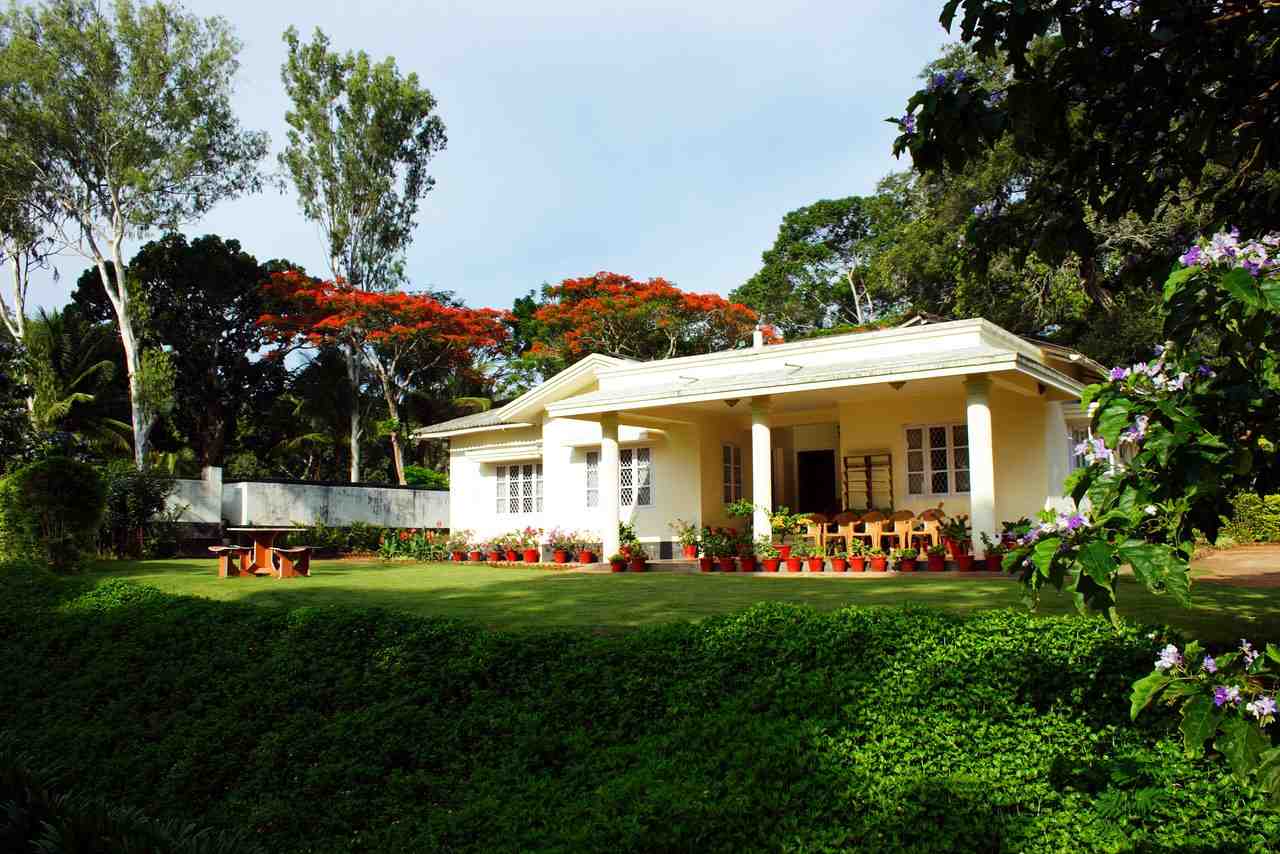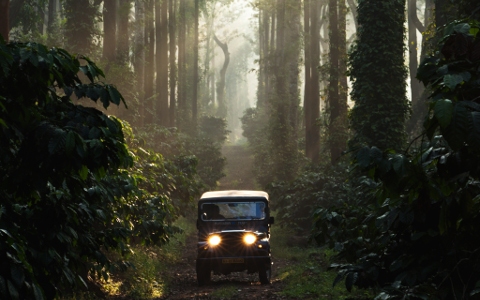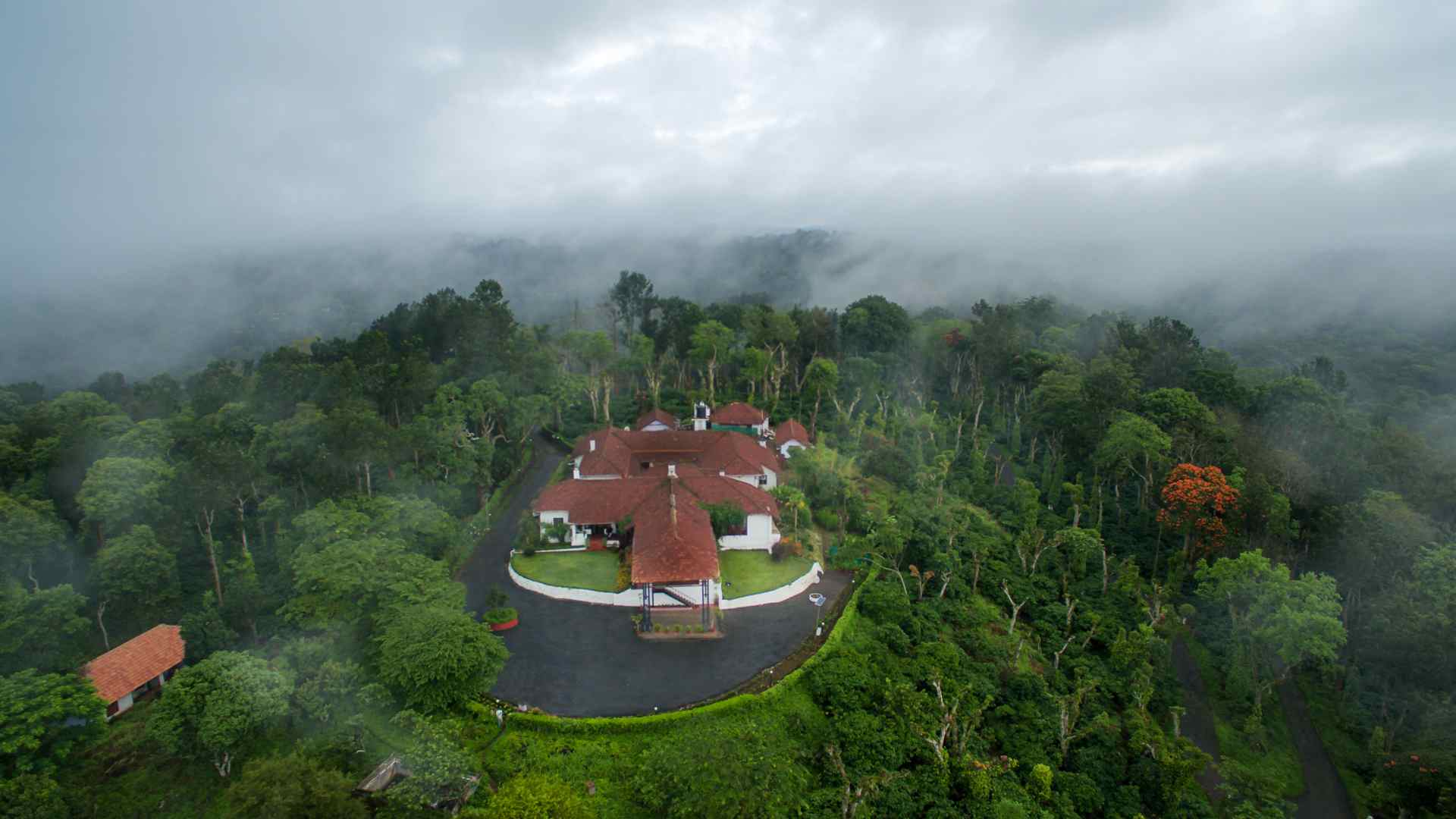Coorg: Coffee plantation tour
It was nightfall by the time we reached our destination. As we left the semblance of human habitation behind and entered what appeared to be forest area, the darkness deepened. So much so, that our seasoned drivers lost their way twice. On a familiarisation (FAM) trip, organised by Tata Global Beverages, to the coffee plantations in Pollibeta, Coorg, our accommodation was kept as a surprise package for us. And the pitch darkness did little to unravel that surprise. As we finally approached the office of Tata Global Beverages, where we were met by our hosts, we could not help but notice quaint signboards picked out by our vehicle’s headlights. This, we soon learnt, were the names of the plantation bungalows we were headed for. Bungalows allocated ~ five persons to each ~ we plunged into the dark once more. But nothing prepared us for what awaited us at the end of the short ride. The colonial period bungalow ~ Thaneerhulla was the name of ours ~ exuded a warm welcome as went up its porch. Tata officials later informed us that the company had refurbished plantation bungalows, where estate managers and officials once resided during British rule. The sprawling bungalows and cottages are set in scenic locales and are breathtakingly beautiful. These now form Tata Coffee’s holiday homes “Plantation Trails”. One can book these homes for an amazing holiday destination.
Also read: Coorg: Armed and very amiable (travellernook.com)
Stately living

The vintage Thaneerhulla Bungalow that was once home to a British coffee plantation manager had an old world charm with all the trappings of modern amenities. With a spacious living room, dining area and five rooms, it was a stately home. And a feeling of home away from home was what we felt when we entered our bungalow. As we were led through the lounge, tastefully furnished with period furniture, we couldn’t help but imagine that we were entering somebody’s lovely home. Our spacious rooms were fitted with modern amenities, including television and comfortable spring mattress on the vintage bed. Dinner in the common dining space, with one side open and leading on to the garden, was an experience in itself. The in-house chef rustled up a never-ending meal as dish after dish were brought out of the kitchen. A mix of “regular” fare of dal-subzi-roti-chawal and local specialities, including pork (pandhi curry) prepared in Kodagu style, it was difficult to resist the food. We hogged so much that when the “special dessert” made with coffee was brought out, we let out a collective groan. But gluttony won the day and we compromised by sharing a couple of cups. All ideas of a night walk were instantly banished as the friendly staff warned us against it. Wild animals, including elephants, were known to roam the estates, they said. The inky darkness beyond the fence of the sprawling garden put the final seal. We woke up to a cacophony of birds and one look at the verdant spread outside the window quickly took us outside. A steaming cup of coffee in the beautiful sunlit garden overflowing with flowers brought out the lazy and redolent streak in us. A breakfast ~ again a mix of bread-butter-eggs, stuffed parathas, dosa and the traditional paputtu ~ was filling. The paputtu, or palputtu, was a steamed rice cake, much like a large-sized idli. Only there was coconut and cardamom in it, which made the fluffy paputtu, cut into wedges and served with curry, literally melt in the mouth.
Also read: Wyanad: Idyllic nature (travellernook.com)
Plantation trail
The entire group assembled at another bungalow ~ Cottabetta, which was once the home of the director of Tata Coffee. And then we set out on an amazing trail through the coffee plantation. Set amid towering trees, the plantation is spread over an area of 2,000 acres, comprising hills and deep valleys. In India coffee is grown in the shade, unlike its counterparts in other parts of the world, notably South American countries, including Brazil and El Salvador, where it is cultivated in the open, informed M B Ganapathy, Senior General Manager and Head of Plantations, who conducted the tour. Over 50 species of evergreen leguminous trees provide a two-tier mixed shade canopy for the plantation. “There are close to a million trees in the plantation,” Ganapathy stated. “Divided into 899 blocks, each of which is numbered, around 8,000 workers are employed on this estate.” The trees help prevent soil erosion on the hilly terrain and also provide support for pepper plants. Inter-cropping is practiced, with pepper, cardamom and vanilla grown in between. The profit per unit area in Coorg is more than Brazil. Moreover, it’s not just coffee but also the spices that we sell, leading to this high profit. This year, for instance, we had a fairly good yield of pepper. Two varieties of coffee plants are grown ~ Arabica and Robusta.
Also read: Kashmir: Paradise in every aspect (travellernook.com)
As the name suggests, Robusta is less affected by pests and diseases. It is easily recognizable by its larger leaves. Since Coorg is located along the Western Ghats, which is known for its rich biodiversity, the area enjoys a good variety of flora and fauna. However, it is now facing the impacts of climate change with erratic rainfall. “However, we follow sustainable practices, with every action having a scientific backing. We are working on how to overcome the problem,” informed Ganapathy. The main source of water ~ 90 per cent ~ is from the rains. Around 275 irrigation tanks collect the rainwater and through a GPS enabled system ensure there is adequate water for the plants. When the plants blossom in February-March, they need a shower. Despite no rains during these months, the entire area was watered. The flowers blossom in February-March and the berries take eight months to ripen. Every stage matters. From blossoming to ripening beans the plants’ nutrition is taken care of. At every stage hygiene is maintained. There is a lot of science and art in preparing coffee. To explain the difference between pea-berry (a single seed in the berry) and plantation coffee (two seeds in the berry), they both originate from the same plant. Generally, there are two seeds but if one were to die the other seed takes its place to form the pea-berry.
Also read: A walk in the jungle (travellernook.com)
Business of coffee

Earlier, before setting out for our visit to the plantations, we were briefed about the position of coffee as a beverage in India. India is still largely a “tea country”. It is a small market for coffee, and in the global market India has one of the lowest per capita consumption. Globally, 0.4 million bags of coffee is produced and India forms 4 per cent of the global market, same as Ethiopia, the place of origin of coffee. Global leaders are Brazil, Colombia and Vietnam. The branded retail market comprised Rs 1,800 crore (18 billion) and the unbranded Rs 400 crore (4 billion). Other than this, coffee vending, food service and café retail are big contributors to coffee consumption in India. While café market accounts for Rs 3,500 crore (35 billion), the vending market is Rs 1,000 crore (10 billion). As for why Tata has entered the coffee market, given that two-third of the population does not drink coffee, it offers a huge potential to expand. People, particularly the youth, are drinking coffee outside their homes. In fact, it is the preferred choice of beverage among them. Growth rate of the branded retail café has been a high 20 per cent over the last five years.
Also read: Rishikesh: Not just a holy town (travellernook.com)
In other traditionally tea drinking markets too, there has been a similar shift to coffee, mainly among the youngsters. In China, 42 per cent of youth prefer coffee while in the UK, 80 per cent of households are now buying instant coffee. The total coffee market is growing at an annual rate of 10 per cent. Given this consumer landscape, which has a few entrenched players, Tata Global Beverages is seeking to find a niche in this market. With its rich heritage in coffee, Tata is the largest player in plantations, quality and technological superiority. Tata launched instant coffee pan India in December 2015, expanding its base in 2016-17 with special blend. In 2017, filter coffee was launched in Tamil Nadu, Kerala and Karnataka. The big differentiator for Tata has been the Freeze-Dried technology, which produces a crystalline form of instant coffee that retains aroma and flavour, closely resembling roast and ground coffee. So far, this variety was only imported, at 3-10 times Tata’s price. But can Tata meet the competition offered by the entrenched players? It is important to first establish in the space and then innovate.
Also read: Darjeeling's Colonial connection (travellernook.com)
.png)
